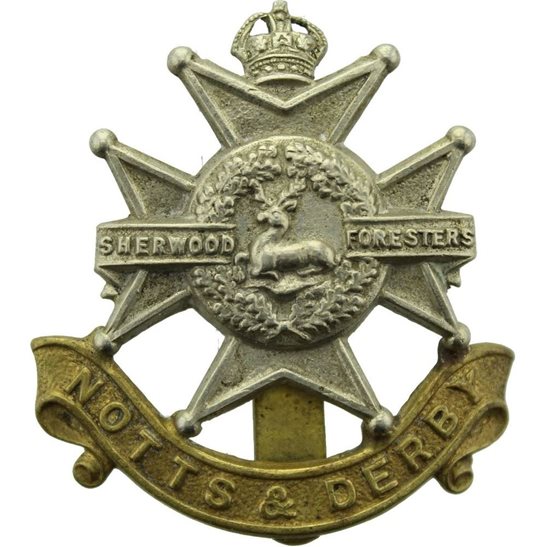Personal Details
Born: 17 July 1887 in Ightfield, Whitchurch, Shropshire.
Family: He was the eldest of five children born to John Ellison, a bricklayer, and his wife Jane. He married Mary Jones in 1915 in Ellesmere, Shropshire and together they had three children – David S, Muriel and Mildred G.
Education: He attended Ightfield School from 1892.
Residence: Until at least 1911 he was living at 3 Church Street, Ightfield. The address shown on the 1919 Absent Voters’ Register is 32 Egerton Road. In 1939 he was living at 37 Worthington Street.
Employment: In 1911 and 1939 he was a bricklayer.
Died: 10 June 1977 in Deermoss Hospital, Whitchurch, aged 89.
Military Details
Regiment: Nottinghamshire and Derbyshire Regiment (previously Welsh Regiment)
Rank: Private
Service Number: 73951 (previously 290751)
Date of Enlistment: 11 December 1915
Date of Discharge: 16 May 1919
Reason for Discharge: No longer physically fit for war service.
John was awarded the Campaign Medals (British War Medal, and Victory Medal) and the Silver War Badge (number B212088).

The British War Medal (also known as 'Squeak') was a silver or bronze medal awarded to officers and men of the British and Imperial Forces who either entered a theatre of war or entered service overseas between 5th August 1914 and 11th November 1918 inclusive. This was later extended to services in Russia, Siberia and some other areas in 1919 and 1920. Approximately 6.5 million British War Medals were issued. Approximately 6.4 million of these were the silver versions of this medal. Around 110,000 of a bronze version were issued mainly to Chinese, Maltese and Indian Labour Corps. The front (obv or obverse) of the medal depicts the head of George V. The recipient's service number, rank, name and unit was impressed on the rim.
The Allied Victory Medal (also known as 'Wilfred') was issued by each of the allies. It was decided that each of the allies should each issue their own bronze victory medal with a similar design, similar equivalent wording and identical ribbon. The British medal was designed by W. McMillan. The front depicts a winged classical figure representing victory. Approximately 5.7 million victory medals were issued. Interestingly, eligibility for this medal was more restrictive and not everyone who received the British War Medal ('Squeak') also received the Victory Medal ('Wilfred'). However, in general, all recipients of 'Wilfred' also received 'Squeak' and all recipients of The 1914 Star or The 1914/1915 Star (also known as 'Pip') also received both 'Squeak' and 'Wilfred'. The recipient's service number, rank, name and unit was impressed on the rim.

The Silver War Badge was issued in the United Kingdom and the British Empire to service personnel who had been honourably discharged due to wounds or sickness from military service in World War I. The badge, sometimes known as the "Discharge Badge", the "Wound Badge" or "Services Rendered Badge", was first issued in September 1916, along with an official certificate of entitlement.

